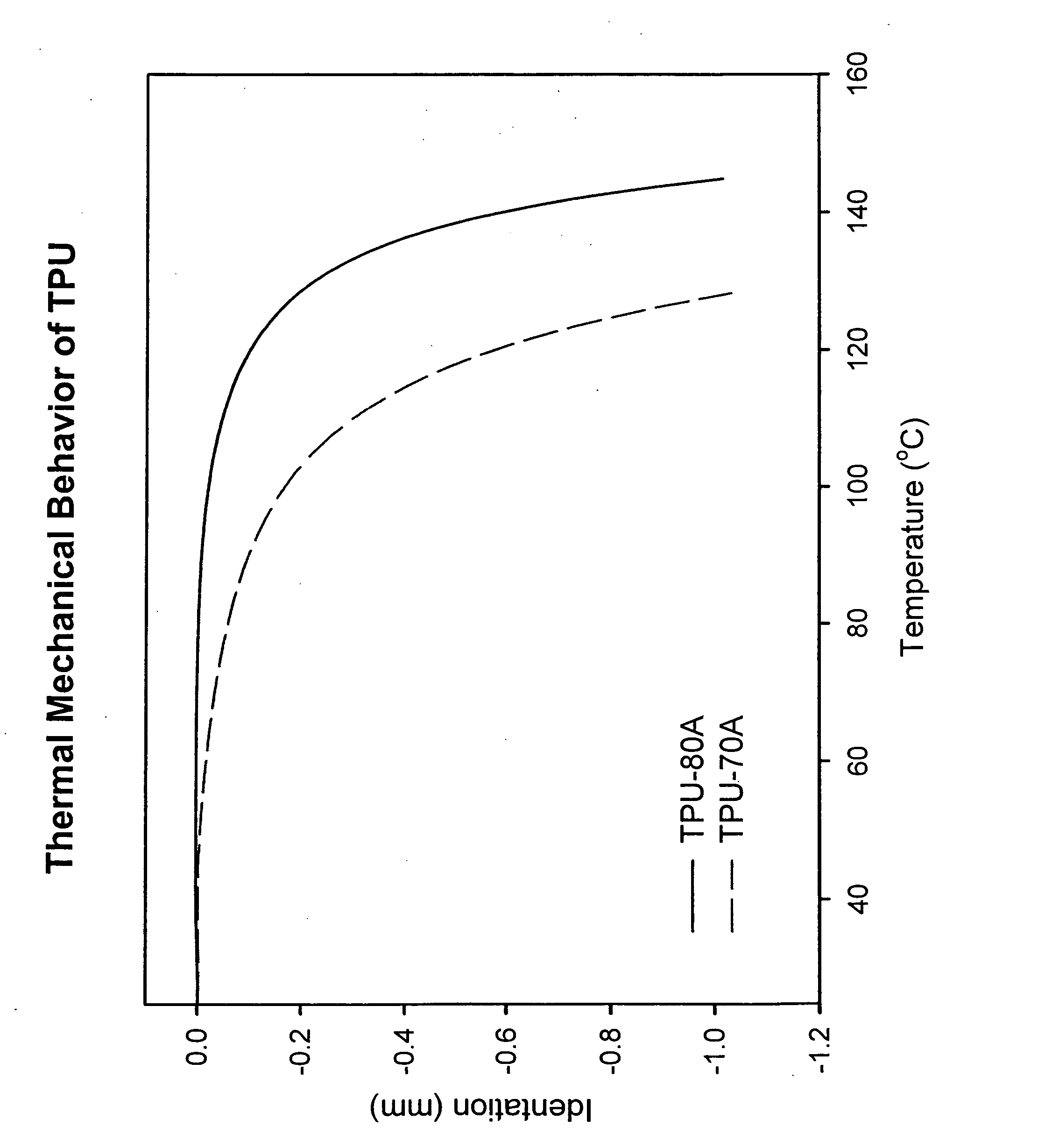Elastic, heat and moisture resistant bicomponent and biconstituent fibers
a technology of bicomponents and fibers, applied in the field of elastic fibers, can solve the problems of poor resistance to moisture at elevated temperature, inability to dye fabrics made from it using conventional aqueous dying processes, and high cost of spandex for many applications, and achieve the effect of promoting adhesion
- Summary
- Abstract
- Description
- Claims
- Application Information
AI Technical Summary
Benefits of technology
Problems solved by technology
Method used
Image
Examples
specific embodiments
Example 1
[0032] Bicomponent fibers of a core / sheath construction are prepared from (i) a sheath of Affinity EG8200 (a homogeneously branched, substantially linear ethylene / 1-octene copolymer manufactured by The Dow Chemical Company with a density of 0.87 g / cc and an MI of 5), and (ii) a core of either Pellethane 2103-70A or Pellethane 2103-80A (thermoplastic urethanes based on MDI, PTMEG and butanediol, both manufactured by The Dow Chemical Company). The FIGURE shows by Thermomechanical Analyzer (TMA) probe penetration data that TPU-2103-80A has a higher softening temperature than TPU-2103-70A (the probe diameter was 1 mm and force of 1 Newton was applied; the sample was heated at 5 C / min from room temperature). The fibers are prepared using a conventional co-extrusion process such that the fiber sheath is 30 weight percent of the fiber, and the fiber core is 70 weight percent of the fiber. The fibers are crosslinked using e-beam at 19.2 megarad under nitrogen.
[0033] After crossli...
example 2
[0041] Biconstituent fibers are prepared from the blend of (i) a sheath of Affinity EG8200 (a homogeneously branched, substantially linear ethylene / 1-octene copolymer manufactured by The Dow Chemical Company), (ii) a core of either Pellethane 2103-70A or Pellethane 2103-80A, and (iii) MAH-g-Affinity ethylene copolymer reacted with a diamine. The blends are first prepared using a twin-screw extruder, and then the fibers are prepared using a conventional spinning process. The fibers are crosslinked using e-beam at 19.2 megarad under nitrogen.
TABLE 7Status of Fiber Spinning from BlendsBlends withoutNot extrudableN / AcompatibilizerBlends withSpunT-210-230 C.compatibilizer(Spinning Temperature)
[0042]
TABLE 8Effect of TPU on Heat Shrinkage (30% TPU + 70%Affinity + 10% Fusabond)ShrinkHeat set(Oil Bath)ShrinkageTPUDraftEfficiency (%)temparature (° C.)(%)TPU-70A1.5979036.31.59411042.21.59713047.31.59615048.32.0909047.52.09411051.82.08913058.62.09215059.6TPU-80A1.5979027.41.59511038.01.598130...
PUM
| Property | Measurement | Unit |
|---|---|---|
| shrinkage | aaaaa | aaaaa |
| density | aaaaa | aaaaa |
| density | aaaaa | aaaaa |
Abstract
Description
Claims
Application Information
 Login to View More
Login to View More - R&D
- Intellectual Property
- Life Sciences
- Materials
- Tech Scout
- Unparalleled Data Quality
- Higher Quality Content
- 60% Fewer Hallucinations
Browse by: Latest US Patents, China's latest patents, Technical Efficacy Thesaurus, Application Domain, Technology Topic, Popular Technical Reports.
© 2025 PatSnap. All rights reserved.Legal|Privacy policy|Modern Slavery Act Transparency Statement|Sitemap|About US| Contact US: help@patsnap.com

